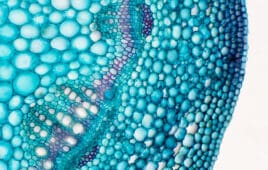 NEJM has published positive results from the KOMFORT Phase 2 trial of oral difelikefalin for nostalgia paresthetica, a condition involving itching, burning or tingly sensations on the back.
NEJM has published positive results from the KOMFORT Phase 2 trial of oral difelikefalin for nostalgia paresthetica, a condition involving itching, burning or tingly sensations on the back.
Cara Therapeutics (Nasdaq:CARA) is the developer of the drug, which won FDA approval in an injectable form for moderate-to-severe pruritus in hemodialysis patients in 2021. That form of the drug has the trade name Korsuva. Difelikefalin is a selective kappa-opioid receptor agonist.
The company’s stock dipped about 2% to $11.67 after the company announced the data.
Drug appeared effective but associated with adverse events
The KOMFORT study’s primary endpoint was a change in the weekly mean of the 24-hour Worst Itch Numeric Rating Scale (WI-NRS) score. At 8 weeks, more patients achieved an at least 4-point improvement with oral difelikefalin than with placebo.
The study recruited 126 patients total.
The NEJM article noted that, while the drug supported modest improvements in reducing itch intensity scores compared to the placebo, it was “associated with adverse events.”
Side effects resulted in 19% of participants in the difelikefalin group dropping out of the trial, compared to 6% of participants in the placebo group.
Secondary outcomes indicated improvements in sleep and itch-related quality of life.
Researchers at the Icahn School of Medicine at Mount Sinai conducted the research.
Future plans
Cara plans on conducting a Phase 2/3 study consisting of an 8-week Phase 2 dose-finding portion followed by two identical Phase 3 trials.
The company also has Phase 3 studies underway testing the potential of oral difelikefalin in advanced non-dialysis dependent chronic kidney disease and atopic dermatitis.
To date, there are no FDA-approved treatments for nostalgia paresthetica. Traditional treatments for the condition include topical creams and ointments, pain medications, transcutaneous electrical nerve stimulation (TENS) and physical therapy.
It is difficult to establish the incidence of nostalgia paresthetica, although many experts agree the condition is underdiagnosed. The condition is more common among women than in men, and usually affects people older than 40.
Filed Under: Dermatology



